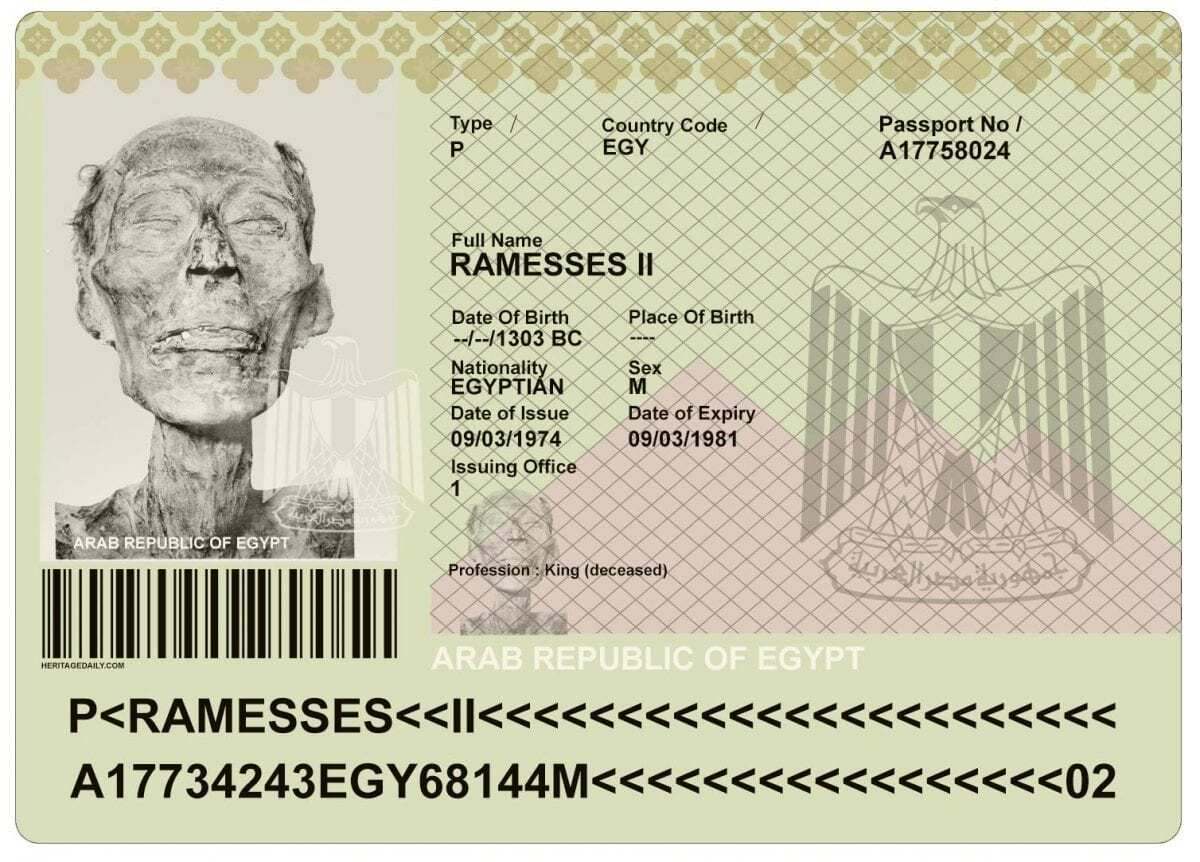https://www.heritagedaily.com/2020/03/the-passport-of-ramesses-ii/126812
The passport of Ramesses II\
Ramesses II, also known as Ramesses the Great, was the third pharaoh of the Nineteenth Dynasty of Egypt.
In 1976, his remains were issued an Egyptian passport (nearly 3 thousand years after his death) so that he could be transported to Paris for an irradiated treatment to prevent a fungoid growth.
Ramesses II is often regarded as the greatest, most celebrated, and most powerful pharaoh of the New Kingdom. His successors and later Egyptians called him the "Great Ancestor". On his death, he was buried in a tomb in the Valley of the Kings; his body was later moved to a royal cache where it was discovered in 1881, and is now on display in the Museum of Egyptian Antiquities.
In 1975, Maurice Bucaille, a French doctor studying his remains said that the mummy was threatened by fungus and needed urgent treatment to prevent total decay. French laws dictated that entry and transportation through the country required a valid passport. To comply with local laws, the Egyptian government issued a passport to the Pharaoh.

The New York Times reported on Sept. 27, 1976 that "The mummy was greeted by the Secretary of State for Universities, Alice Saunter‐Seite, and an army detachment. Ramses II, who ruled Egypt for 67 years, received special treatment at Le Bourget Airport."
It was then taken to the Paris Ethnological Museum for inspection by Professor Pierre-Fernand Ceccaldi, the chief forensic scientist at the Criminal Identification Laboratory of Paris.
During the examination, Cecaldi noted that the "Hair, astonishingly preserved, showed some complementary data—especially about pigmentation: Ramses II was a ginger-haired 'cymnotriche leucoderma'" (meaning he was a fair-skinned person with wavy ginger hair).
Also that "in ancient Egypt people with red hair were associated with the deity Set, the slayer of Osiris, and the name of Ramesses II's father, Seti I, means "follower of Seth" said Cecaldi. The examination also revealed evidence of previous wounds, fractures, and arthritis which would have left Ramesses with a hunched back in the later years of his life.
In 2007 it was discovered that small tufts of the Pharaoh's hair were stolen during the 1976 preservation work (published by the BBC). A Frenchman named Jean-Michel Diebolt, said he had inherited the hair from his late father, a researcher from the team who analysed the mummy. Deibolt had tried to sell the hair through an online auction for 2000 euros (£1360), but was quickly apprehended by French authorities.
-- Sent from my Linux system.
No comments:
Post a Comment